How We Test Water Filters
We’ve dedicated hours of time and effort into developing, fine-tuning, and enhancing our water filter testing and rating system. Our system is meticulously crafted to provide a transparent and equitable quantitative evaluation of water filters.
Our aim when developing this testing system was to provide a reliable guide that our readers can use to identify the water filters that best suit their needs.
Here, we’ve shared a comprehensive breakdown of our testing and scoring criteria, so you can understand how we assess and rate water filters.
Our Scoring Factors
When we review a water filter, we use a scoring system that comprises 6 key scoring factors, made up of 9 sub-factors.
We’ve awarded each factor a certain weight (as a percentage) based on how important we think it is.
- Contaminant Reduction: 55%
- Filtration Rate: 10%
- Design: 10%
- Setup: 10%
- Maintenance: 10%
- Company: 5%
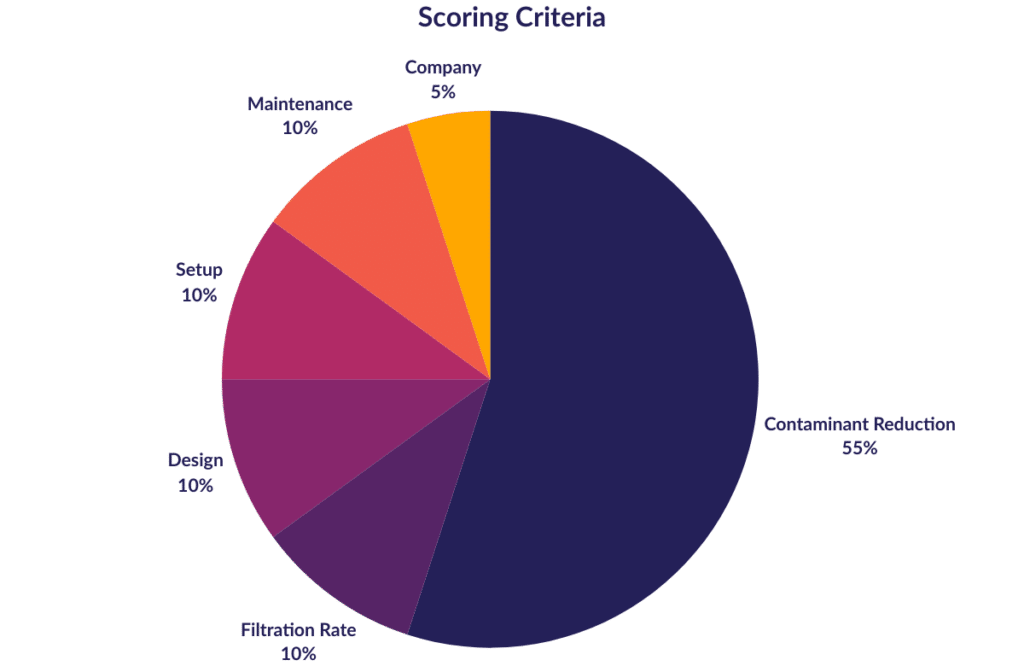
Score Grades
We award each scoring factor a grade out of 10. For each water filter we test, we apply a score to each testing category, which we combine to calculate an overall weighted score.
- 10: Exceptional: A perfect score, exceeding expectations in all areas.
- 9.5-9.9: Outstanding: This is a fantastic score, demonstrating significant strengths and minimal weaknesses.
- 9.0-9.4: Excellent: A very good score, showing strengths and exceeding basic expectations. Although not perfect, it’s likely to be highly satisfactory for most folks.
- 8.5-8.9: Good: A decent score, fulfilling necessary requirements and indicating acceptable performance. However, there might be some room for improvement or areas of concern.
- 8.0-8.4: Fair: A borderline score, indicating potential problems or weaknesses that require attention.
- 7.5-7.9: Below Average: A poor score, highlighting significant issues that need to be addressed. Performance is below expected standards and requires improvement.
- 7.0-7.4: Weak: A bad score, showing major flaws and significant concerns. There are critical problems that need to be addressed.
- 6.5-6.9: Failing: A barely passing score, indicating performance has barely met minimum requirements. Significant issues need improvement.
- 6.4 or less: Unsatisfactory: A clear failing score. Performance falls far below acceptable standards.
Let’s look at our scoring factors in more detail and discuss how we award scores for each of these factors, and how they influence the overall score.
Contaminant Reduction
Our contaminant reduction score is an objective score based on two sub-factors:
- Official performance certifications: 10%
- Our own lab tests: 90%

Contaminant reduction is an objective scoring factor because it’s based on actual data, whether we’ve obtained it from our own outsourced laboratory testing or from an official testing organization like the NSF.
Here are the specifics that we account for when scoring water filters for contaminant reduction.
Official Performance Certifications
First, we search online to learn about the certifications that a water filter may have for its performance. These are typically awarded by the NSF, WQA, or IAPMO.
In this current iteration of our scoring system, we consider the following two things:
- How many contaminants is the water filter certified to remove?
- How does this compare to the number of contaminants that the manufacturer claims to remove?
A score is then assigned based on the percentage of reduction claims versus official performance certifications:
- 10 – Certified for 100% of reduction claims
- 9.5 – Certified for 76% to 99% of reduction claims
- 9.0 – Certified for 51% to 75% of reduction claims
- 8.5 – Certified for 26% to 50% of reduction claims
- 8.0 – Certified for 1% to 25% of reduction claims
- 7.0 – Certified for <1% of reduction claims
- 6.0 – Not certified for any reduction claims
Our Own Lab Tests
Most of the weight of the contaminant reduction score is based on our own laboratory water testing using Tap Score.
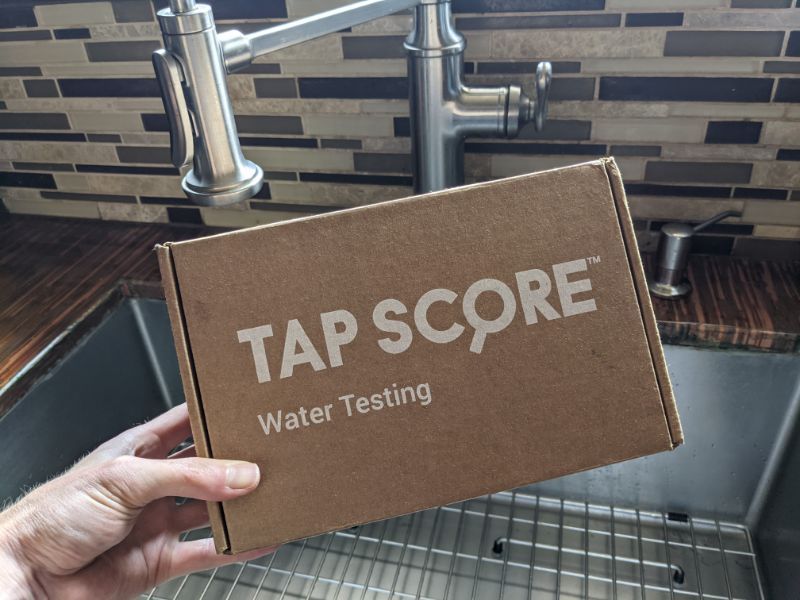
We assign ratings to water filters according to the scores outlined in our Tap Score reports for health-related, aesthetic, and plumbing-related contaminants, which have the following weighting:
- Health-related contaminants: 90-95% (depending on whether or not we consider plumbing-related contaminants)
- Aesthetic-related contaminants: 5%
- Plumbing-related contaminants: 5%

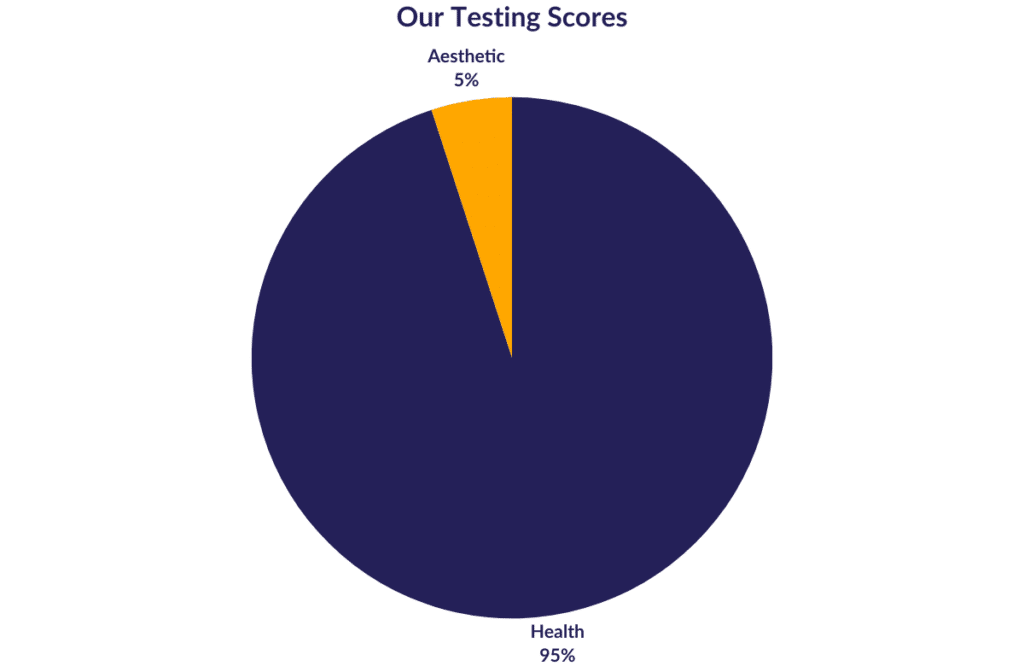
Here’s how we score water filters for each contaminant group:
Health-Related Contaminants
For products that can be used to filter both treated municipal water and untreated water (such as stream water, lake water, etc.), we consider its performance reducing city water contaminants (50%) and untreated surface water contaminants (50%).
If a water filter can only be used to filter treated city water, it’s performance reducing city water contaminants makes up 100% of the score.

Treated City Water
For treated city water, we use the Assigned Tap Score for health-related contaminants. 75 corresponds to 7.5, etc.
- 10 – Tap Score 100
- 9.5 – Tap Score 95
- 9.0 – Tap Score 90
- 8.5 – Tap Score 85
- 8.0 – Tap Score 80
- 7.5 – Tap Score 75
- 7.0 – Tap Score 70
- 6.5 – Tap Score 65
- 6.0 – Tap Score 60
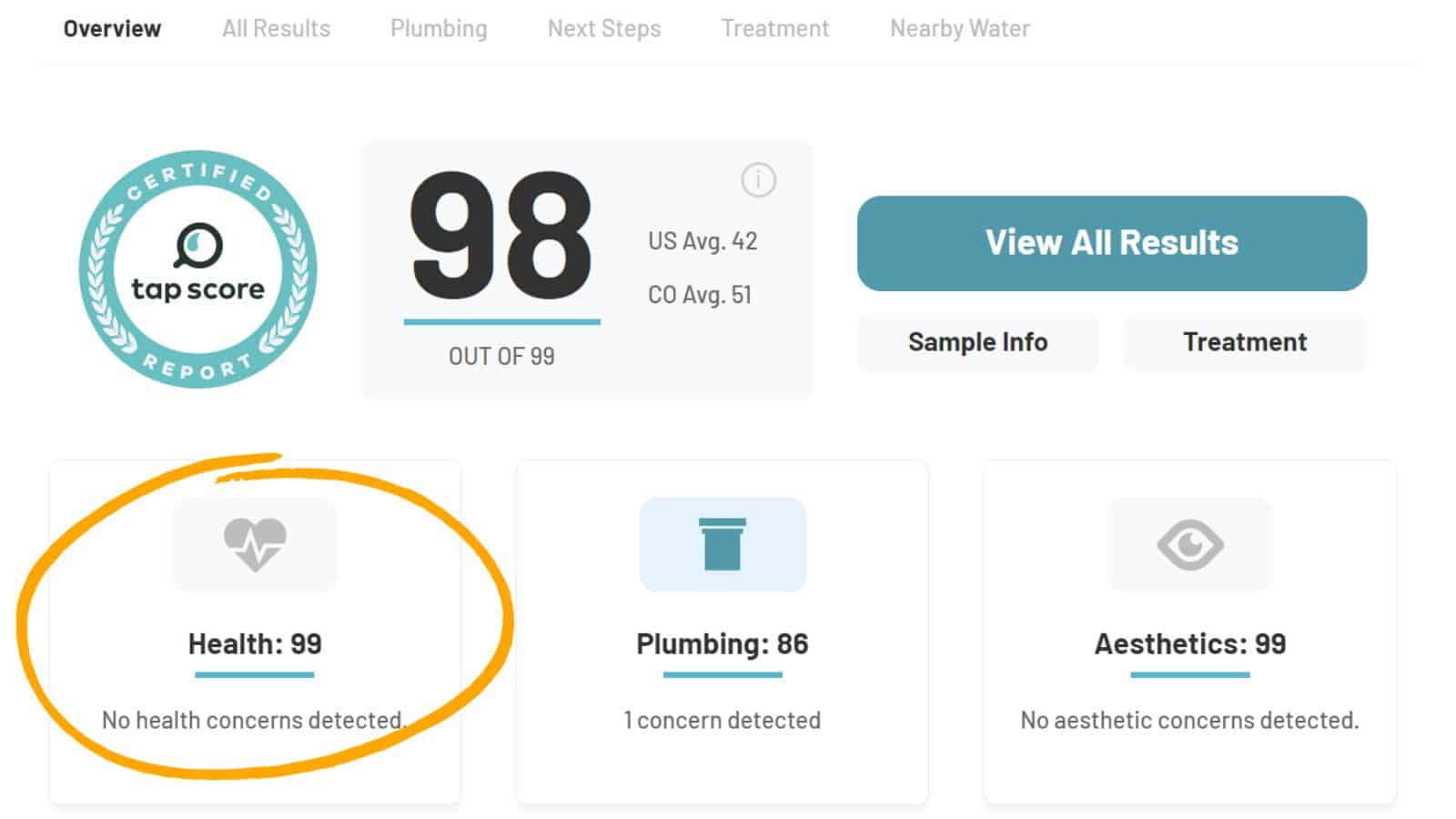
Untreated Surface Water
For untreated surface water, we’re mostly interested in microbiological contaminant reduction. We assign a score based on whether or not microbiological contaminants are detected in the filtered water.
- 10 – Detected microorganisms 100% removed
- 6 – Detected microorganisms partially or not removed

Aesthetic-Related Contaminants
- 10 – Tap Score 100
- 9.5 – Tap Score 95
- 9.0 – Tap Score 90
- 8.5 – Tap Score 85
- 8.0 – Tap Score 80
- 7.5 – Tap Score 75
- 7.0 – Tap Score 70
- 6.5 – Tap Score 65
- 6.0 – Tap Score 60

Plumbing-Related Contaminants
- 10 – Tap Score 100
- 9.5 – Tap Score 95
- 9.0 – Tap Score 90
- 8.5 – Tap Score 85
- 8.0 – Tap Score 80
- 7.5 – Tap Score 75
- 7.0 – Tap Score 70
- 6.5 – Tap Score 65

Filtration Rate
For all the water filters we test, we calculate the filtration rate ourselves by timing how long it takes to filter 1 gallon of water. We then cross-reference our data with the flow rate/water production rate information that we obtain from the manufacturer.
Different types of water filters can treat water at different speeds. We’ve accounted for these differences and have our own separate scoring systems for:
| System Type | Pressure Source | Unit of Measurement |
|---|---|---|
| Pressurized systems | Pump or incoming water pressure | GPM (gallons per minute) |
| Under-sink RO systems | Pump or incoming water pressure | GPD (gallons per day) |
| Gravity-fed systems | Gravity | GPH (gallons per hour) |
Here are how scores are awarded based on system type:
Pressurized Systems
- 10 – 2+ GPM
- 9.5 – 1.51 – 2.0 GPM
- 9.0 – 1.01 – 1.5 GPM
- 8.5 – 0.76 – 1.0 GPM
- 8.0 – 0.1 – 0.75 GPM
- 7.5 – 0.051 – 0.1 GPM
- 7.0 – 0.026 – 0.05 GPM
- 6.5 – 0.011 – 0.025 GPM
- 6.0 – <0.01 GPM

RO Systems
- 10 – 100+ GPD
- 9.5 – 95-99 GPD
- 9.0 – 90-94 GPD
- 8.5 – 85-89 GPD
- 8.0 – 80-84 GPD
- 7.5 – 75-79 GPD
- 7.0 – 70-74 GPD
- 6.5 – 65-69 GPD
- 6.0 – 50 GPD or less

Gravity-Fed Systems
- 10 – 2+ GPH
- 9.5 – 1.75 – 2.0 GPH
- 9.0 – 1.50 – 1.74 GPH
- 8.5 – 1.25 – 1.49 GPH
- 8.0 – 1.00 – 1.24 GPH
- 7.5 – 0.75 – 0.99 GPH
- 7.0 – 0.50 – 0.74 GPH
- 6.5 – 0.26 – 0.49 GPH
- 6.0 – 0.25 GPH or less

Design
Design is a testing category that’s based on our own experience using a water filter. It comprises two sub-factors:
- Component quality: 60%
- Certification (for materials safety): 40%

Here are the specifics that we’re looking at when assessing water filters for design.
Component Quality
Component quality is a subjective ranking based on our research into the materials used in the water filter, and our own experience handling the product.
There are a few questions we ask ourselves when assessing water filters for their quality, including:
- What materials is the system made of?
- How durable are these materials?
- Are they prone to breaking, cracking, or scratching?
- What are the connections like?
- Is there a potential for leaking?
- How sturdy and solid does the filter feel in our hands?
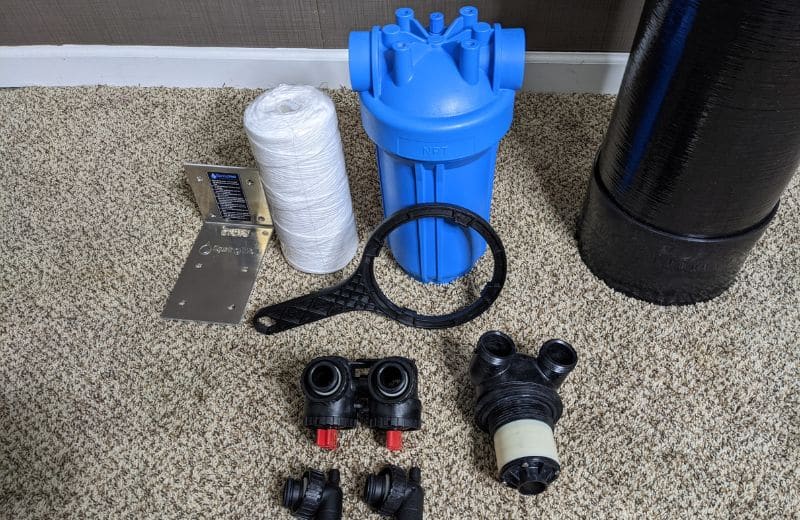
Component quality and durability/ longevity go hand in hand, so we spend a lot of time evaluating a water filter for its quality. We also update our reviews when necessary if we notice a change in component quality after an extended period of using a specific system.
We use the following scoring system to rank a water filter for component quality:
- 10: Systems earning this score represent the pinnacle of quality, crafted from high-grade materials like medical-grade stainless steel or glass.
- 9.5: Filters have a robust construction with materials like impact-resistant Tritan or reinforced polymer composites, ensuring long-lasting durability. Functionality is enhanced through intuitive, ergonomic, and thoughtful design features.
- 9.0: Systems achieving this rating strike a balance between contemporary aesthetics and practical performance. They have sleek designs and practical features like leak-proof connections, and easily accessible filters.
- 8.5: Filters prioritize durability and efficiency, offering solid construction with durable, BPA-free plastics like ABS. They have functional designs that prioritize efficient, reliable filtration and ease of use. These filters meet basic safety standards and regulations, providing peace of mind for everyday use.
- 8.0: Systems utilize safe plastics that adhere to industry safety standards, even without extensive certifications, and are durable enough for everyday use, providing a practical solution.
- 7.5: These filters utilize standard plastics and focus on delivering basic functionality, with certifications that might be limited or specific to certain components.
- 7.0: Systems with simple, no-frills designs. Visible seams or joints may be present, and they often utilize basic plastics without specific certifications.
- 6.5: Filters may pose concerns about material quality or safety, with limited functionality. Lacks basic information about materials used.
- 6.0: Our lowest ranking for filters constructed with questionable materials that raise safety concerns and may not meet basic regulatory requirements. These filters may pose potential risks to health or performance.
Certification
There’s just one question that we ask when evaluating a water filter within the certification sub-category for design:
- Is the system certified for materials safety?1
If it is, we award it a 10. If it isn’t, it gets a 6.
1Materials safety is included as a component of certifications such as NSF/ANSI 42, 53 and 401 or can be a standalone certification to NSF/ANSI 372 for lead-free design.

Setup
Setup is a subjective ranking factor. We calculate a water filter’s setup score based on our experience installing or assembling the system at home. We consider several factors when scoring a water filter for setup, including:
- The quality of the instructions in the user manual
- Whether or not the filters need to be primed, and the ease of the filter priming process
- How much of the initial setup has already been completed prior to shipping
- Whether or not plumbing modifications are required for installation
- A system’s DIY-friendliness, and the likelihood of requiring a professional installation
To test setup, we install or assemble a water filter using the supplied resources (the user manual, and, occasionally, videos supplied by the manufacturer online).
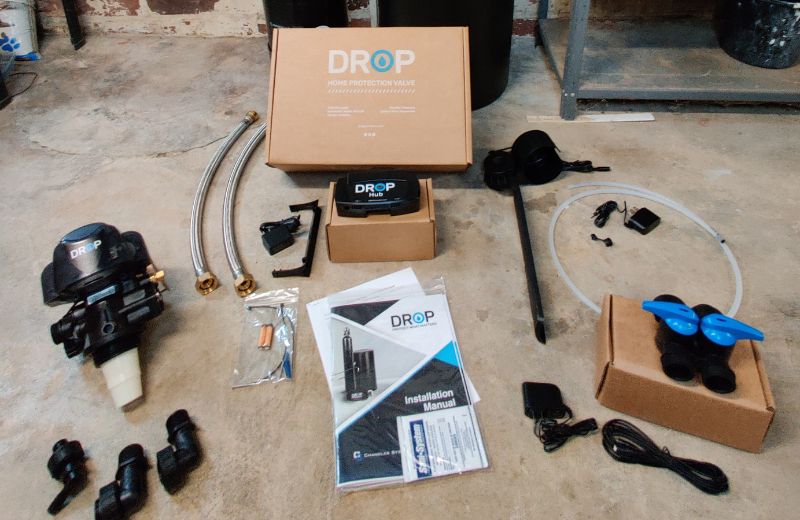
The exception here is when we determine that a system needs to be professionally installed. This is likely if the filter requires a point-of-entry installation and has more than 10 parts and connections.
Here is the scoring system that we use when testing water filters for setup:
- 10: Filters with the highest score are shipped ready to use, so we only have to insert the filters. No assembly, tools, or technical know-how is required.
- 9.5: A filter with this score takes under 10 minutes to install or assemble, even for beginners. The user manual contains clear instructions to guide you through the process.
- 9.0: These filters can be independently in 15-20 minutes with basic hand tools. Straightforward instructions make the process DIY-friendly.
- 8.5: Filters achieving this score can be installed 20-30 minutes and require careful attention to instructions, but no complex plumbing or tools. They’re a good fit for folks with minimal DIY experience.
- 8.0: Set-up of these filters takes 30-45 minutes with basic tools and attention to detail. They’re generally suitable for folks comfortable with simple assembly tasks.
- 7.5: To install filters with this score, you might benefit from professional help. Technical instructions and potential challenges could extend setup time to 45-60 minutes.
- 7.0: A filter with a 7.0 score requires plumbing knowledge, tools, and comfort with technical concepts. Complex instructions or lack of detail might extend setup time beyond an hour. We generally recommend professional assistance for the setup.
- 6.5: Filters have a challenging setup for even experienced DIYers, and specialized tools or knowledge might be needed. Again, we advise professional installation for most folks.
- 6.0: The lowest score for filters that require complex plumbing work, which is best handled by professionals. Instructions may be difficult for non-experts to follow.
Maintenance
Most of the water filters we test require some level of maintenance, so it was important for us to acknowledge the long-term commitment of owning a system.
We consider the required servicing for a system and the annual cost of keeping the system in working order. These are divided into two sub-categories:
- Servicing requirements: 50%
- Costs: 50%

Let’s look at these two sub-categories in more detail.
Servicing Requirements
Servicing requirements is a subjective ranking factor because it’s based on our own opinions on a filter’s specific maintenance needs.
Some of the areas we consider within this sub-category are:
- What’s the listed filter capacity/lifespan? Filter capacity is the maximum volume of water (in gallons) that can be filtered, and lifespan is the approximate timeframe that this equates to based on the manufacturer’s estimate of filter usage
- How often did we need to replace the filters, and how did this compare to the listed filter life?
- Are there any other maintenance tasks required aside from filter changes? (e.g. cleaning, scheduling regenerations, etc.)
- How easy did we find the maintenance tasks?
- Does the filter have any features that help us to remember maintenance? (e.g. filter change reminders, autoship programs, TDS readers on RO systems, etc.)
To test filters in this sub-category, we evaluate the maintenance requirements of a system throughout our testing period.
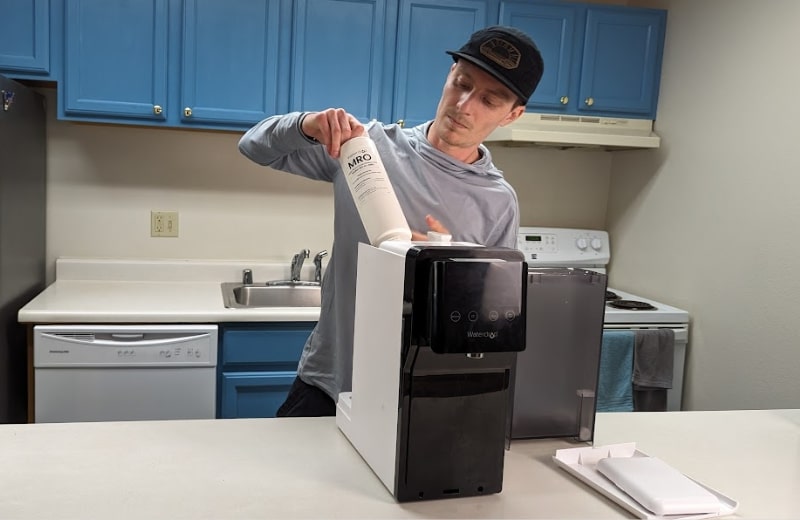
We use the following system to award a score to the filters:
- 10: A filter with this highest score is a self-sufficient system with automated cleaning, extended filter lifespans, a filter autoship program, and proactive alerts for minimal user involvement.
- 9.5: These filters require quick, easy maintenance like pre-filter rinses or filter changes without special tools or skills. They have easily accessible filters for hassle-free replacements.
- 9.0: Filters with this score provide clear indicators and comprehensive instructions to guide users through filter replacements. Occasional deeper cleaning of specific components might be needed.
- 8.5: Systems require routine tasks like sediment filter changes and membrane rinses that can be done with basic tools, and offer clear instructions.
- 8.0: For filters with this score, routine maintenance is manageable, but advanced procedures like deep sanitization might benefit from professional expertise.
- 7.5: These filters may require disassembly, specialized tools, and familiarity with technical concepts for maintenance.
- 7.0: A water filter with this score will require challenging maintenance for most users. Professional servicing may be needed for optimal performance, with a few DIY tasks possible.
- 6.5: These systems need more frequent professional visits or stringent cleaning protocols. Maintenance costs become a significant factor for these filters.
- 6.0: The lowest score for filters that require regular professional service that’s essential for system upkeep and optimal performance. DIY maintenance is not generally recommended or even possible.
Costs
Costs makes up the other 50% of our maintenance ranking category and is objective. We base our costs scoring on information about filter lifespan and pricing that we find online.
We calculate the cost per gallon and estimated annual cost of replacing the filters based on the manufacturer’s specifications of the filter.
Filters with a lower cost per gallon are awarded a higher score because they’re more affordable to maintain in the long run.
Here’s some other key important information to know about how we calculate costs:
- For the sake of simplicity and objectivity, we calculate cost based on the price for a single cartridge
- This calculation does not account for filter bundle or subscription discounts the manufacturer may offer
Here are the scorings we’re currently using based on our estimated cost per gallon for a water filter:
- 10 – <$0.30/gallon
- 9.5 – $0.30-0.37/gallon
- 9.0 – $0.38-0.45/gallon
- 8.5 – $0.46-0.53/gallon
- 8.0 – $0.54-0.61/gallon
- 7.5 – $0.62-0.69/gallon
- 7.0 – $0.70-0.77/gallon
- 6.5 – $0.78-0.85/gallon
- 6.0 – >$0.85/gallon

Company
Finally, we score the company selling the water filter based on a few different factors, including the warranties and guarantees that are provided to protect customer purchases.
When rating filters in this category, we consider three separate sub-categories:
- Warranty length: 40%
- Shipping: 30%
- Returns: 30%

Here are the specifics that we take into account for each of these sub-categories.
Warranty Length
A warranty typically gives customers access to replacement parts or components if their system has a design fault that can be traced back to the manufacturing process.
This sub-category is objective since it’s based on the information provided by the manufacturer.
We may adjust our scoring system for warranty as we continue to gather more data on average warranties for different types of water filters. For now, this is how we currently score water filters in this sub-category:
- 10 – Lifetime warranty
- 9.0 – 2 years warranty
- 8.5 – 1 year warranty
- 8.0 – 6-11 months warranty
- 7.5 – 3-5 months warranty
- 7.0 – <3 months warranty
Shipping
We score water filters in the shipping sub-category depending on the manufacturer’s cost to ship the system.
In a best-case scenario, the manufacturer offers free shipping for all their products. But some manufacturers may only offer free shipping to specific regions, free shipping based on an order threshold, or variable shipping fees that depend on item weight and delivery location.
Here’s our scoring system for shipping:
- 10 – Free shipping on all orders
- 9.5 – Free shipping to specific region (lower 48 & Canada)
- 9.0 – Free shipping based on order threshold
- 8.0 – Variable shipping costs based on location and weight
Returns
We found that most of the water filters we’ve tested can be returned, but some can’t be returned for free.
Our scoring system for returns is based on the manufacturer’s returns offerings:
- 10 – Free returns within 90 days
- 8.0 – Free returns within 30 days
- 7.0 – Restocking fee
- 6.0 – Returns not available
A Word On Miscalculations & Errors
Because of the complexity of our scoring system, there’s always a chance that we could miscalculate a score, interpret data inaccurately, or make any other error.
While we triple-check our articles to avoid mistakes, we can’t guarantee that every piece of information we provide is 100% correct.
Please contact us if you think we may have shared an inaccuracy and we’ll review the potential issue as soon as we can.
And once we have the data, here’s how we choose the best water filters
Get in Touch
Got anything to say about our testing procedure? We’d love to hear your feedback – contact us here.
